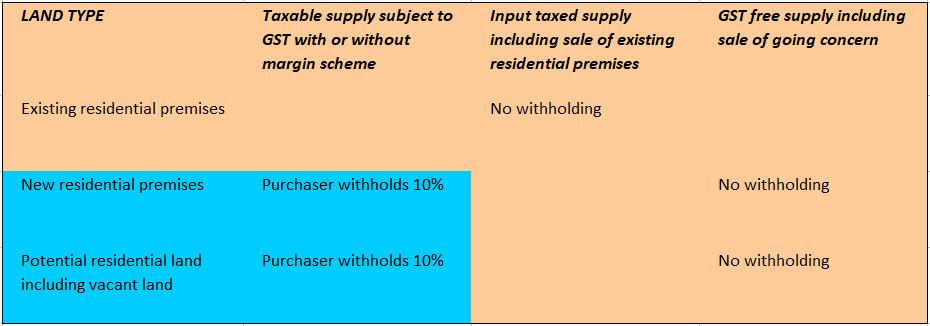 Ending a trust is straight forward, isn’t it? Vest all interests in the trust in beneficiaries and make the right accounting entries and the trust is terminated? Not quite.
Ending a trust is straight forward, isn’t it? Vest all interests in the trust in beneficiaries and make the right accounting entries and the trust is terminated? Not quite.
That word “vest”. What does it mean? Vest is a technical legal term. Broadly it means to imbue with ownership of property. So, when a trust ends and the property of the trust vests, the beneficiaries of the trust succeed the trustee of the trust as entitled to the property in the trust.
But not all trusts end that way. For instance a unit trust or an unpaid present entitlement may already be vested in a beneficiary or beneficiaries. Clearly something other than vesting is needed to bring trusts of that type to an end. In those cases property that has already vested in beneficiaries may need to be paid to or put in the possession of the beneficiaries too for the trust to end.
Ending is all in the timing
In most states and territories of Australia trusts must vest within a statutory perpetuity period, typically 80 years. From this point this post relates to jurisdictions where a statutory perpetuity period applies.
Trusts that are fully vested, such as bare trusts, fixed trusts, some sorts of unit trusts and “indefinitely continuing” superannuation funds may continue for longer than the perpetuity period. A discretionary trust must vest no later than the perpetuity period, that is, discretions to distribute all income and capital of the trust must be taken and sunset once the time for vesting has been reached otherwise it will be too late and the formula for distribution for “takers-in-default” set out in the trust deed will apply to the property then left in the trust. The divesting of those interests, which are then held by the trustee outright for those beneficiaries, by payment over to, or at the direction of, the beneficiaries, can happen later after the expiry of the perpetuity period.
Bringing forward the ending of a trust
The trust deed should also set out how the time for vesting can be brought forward from the expiry of the perpetuity period. That time of expiry will usually be the “default” time for vesting, or a time just before it, (the last vesting time) in a well-crafted discretionary trust deed.
An objective of winding up a trust is to satisfy all parties with interests, in the wider sense, in the trust, including creditors, trustees, beneficiaries and the Commissioner of Taxation.
Failure to address these interests of the parties interested, or the trust deed requirements and formalities for the bring forward of the time of vesting, can mean that the trust, or its aftermath, will remain a matter in contention or dispute which is diametrically not what a trustee will want to occur following their effort to bring the trust to an end. A trustee can face difficulty in the converse case too where a trust is inadvertently brought to an end prematurely. In other words trustees can face problems where a trust has a mistimed ending either way. A trust may go on longer than planned or it may be inadvertently brought to an end before the trust should end. An example of the latter is to be found in trust deeds which set an inexplicably early time for vesting many years prior to the expiry of the perpetuity period.
Ending by depletion and merger
Depletion and merger are two other ways a trust may be brought to an end even where the intent of the trustee and beneficiaries is, and the trust deed may suggest that, the trust is to go on for longer.
Depletion is where the trustee no longer holds property on trust. If trust property is depleted and the trustee acquires more property on trust, the arrangement is treated as a new and separate trust. A “resettlement” occurs as well as likely confusion about which trust is which. Hence the device of a “settled sum” for a discretionary trust, which remains as trust property, to ensure continuity of the (original) trust even where the trust is in deficiency and has no other identifiable property.
Merger also brings a trust to an end in an untimely and premature way. Merger occurs where the trustee and the beneficiary are or become the same person. In the case of a merger the trust obligation of the trustee under the terms of the trust is no longer owed to the beneficiary so the trust does not continue.
Merger and SMSFs with individual trustees
Merger can be an interesting issue in the case of a self managed superannuation fund with individual trustees. There is no merger while the fund has two trustees: Trustee A has trust obligations to member B and trustee B has trust obligations to member A. However if a trustee/member dies and the surviving sole trustee is also the sole member of the fund with a fully vested beneficiary account of the entirety of the fund, the fund likely merges. It follows that the fund is no longer a trust. The Commissioner of Taxation has not addressed how the doctrine of merger may apply in these cases, and, as I understand it, the Commissioner treats a fund in this situation as continuing on as a matter of administrative convenience. If the Commissioner’s approach, which may be tantamount to a recognition of a self managed superannuation fund that is not a trust, came before the courts, it is unclear how it might be explained or permitted.
Some starting points
Trusts that require winding up usually commence by and are governed by a trust deed. I am not writing here of testamentary trusts. A trust deed will usually state the requirements to wind up the trust including how the time of vesting must be brought forward. A trust deed may also provide for other things which complicate vesting or winding up, or both. The trust deed may require that a party’s consent is required before either can happen. There may be other forerunner steps which haven’t been taken which must be taken before the trust can vest under the deed. A grasp of the design or method of the trust provisions in the trust deed will build confidence that all requirements for a winding up raised in a trust deed have been identified and addressed.
If the accounts of the trust have been correctly prepared then the current balance sheet, in particular, gives a list of activity to be addressed before the trust can be wound up. For a company liquidation, liabilities need to be satisfied with the balance of assets (property) distributed to owners. Trusts are no different. The more assets have been converted to cash and liabilities have been met the simpler the contemporary balance sheet and the winding up will be.
Tax planning
The conversion of assets to cash can give rise to taxable capital gains and assessable balancing charges but the alternative, their distribution to beneficiaries on a winding up inevitably does so too. It is generally simpler or more tax effective, or both, if these CGT events are contemporaneous with the trust coming to an end. In the cases of a fixed trust or a unit trust CGT event E4 can occur where a non-assessable part of a capital gain is distributed to a beneficiary when the interest of the beneficiary in the capital of the trust persists.
Errors frustrate the ending
Correct accounting in the trust will follow correct treatment of interests, assets or liabilities in the trust by the trustee. But correct treatment of interests, assets or liabilities doesn’t always happen. Notable examples where correct treatment doesn’t happen include:
- the elimination of entitlements of family beneficiaries in the course of a winding up. Trustees of discretionary trusts distribute trust income to family members on lower tax rates (A) which remains unpaid and which is treated in the accounts of the trust as an unpaid present entitlement under terms in the trust deed. On winding up the distribution may revert to or may be paid to the principals of the family (B) instead without explanation. That suggests that the present entitlement of beneficiaries to former income of the trust was a sham or misunderstood with potential tax liability for the trustee;
- distribution in the course of a winding up to individuals where the trust holds money or property sourced from a private company to which Division 7A of the Income Tax Assessment Act 1936 applies. This may be inconsistent with repayment of the money or property to the relevant company and could trigger a “deemed dividend” tax liability; and
- backdating and forgiveness of loans – it can be tempting for a trustee to purge debts to related parties in the accounts of a trust but the purge is unlikely to be legally effective. A more nuanced treatment, which actually addresses the nature of the original transaction, is more likely to be accepted.
The Commissioner of Taxation investigates, audits and challenges trusts and the parties involved in these kinds of errors including after a winding up.
Conclusion
The affairs of trusts vary greatly and some have deeply intransigent issues. Getting a trust ready to wind up, and executing that wind up at a custom desired point in time may pose a number of challenges which should be considered and addressed in the process. The legal, accounting, business and practical attributes of the trust and possible errors should be considered through the due diligence process so that a non-contentious consignment of the trust to history can be effectively documented.
 In EE&C Pty Ltd as Trustee for the Tarcisio Cremasco Family Trust v. Commissioner of Taxation (Taxation) [2018] AATA 4093 (30 October 2018) the taxpayer, after concluding a minute of terms of agreement with the Commissioner of Taxation (the Commissioner) on 18 January 2011, entered into a deed to settle a tax dispute with the Commissioner for the 1999 to 2005 years of income on 23 March 2011 (the Deed of Settlement).
In EE&C Pty Ltd as Trustee for the Tarcisio Cremasco Family Trust v. Commissioner of Taxation (Taxation) [2018] AATA 4093 (30 October 2018) the taxpayer, after concluding a minute of terms of agreement with the Commissioner of Taxation (the Commissioner) on 18 January 2011, entered into a deed to settle a tax dispute with the Commissioner for the 1999 to 2005 years of income on 23 March 2011 (the Deed of Settlement).








